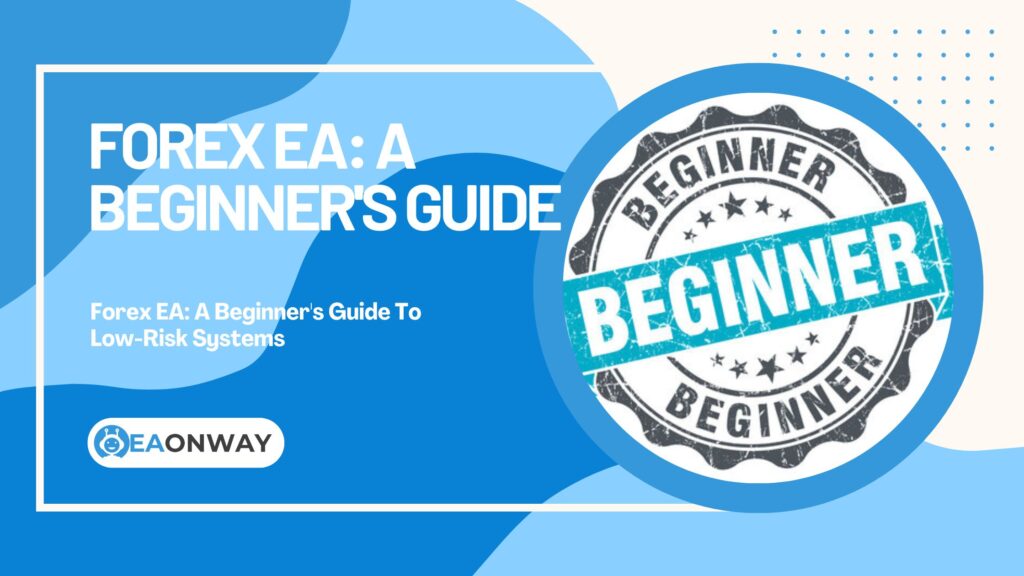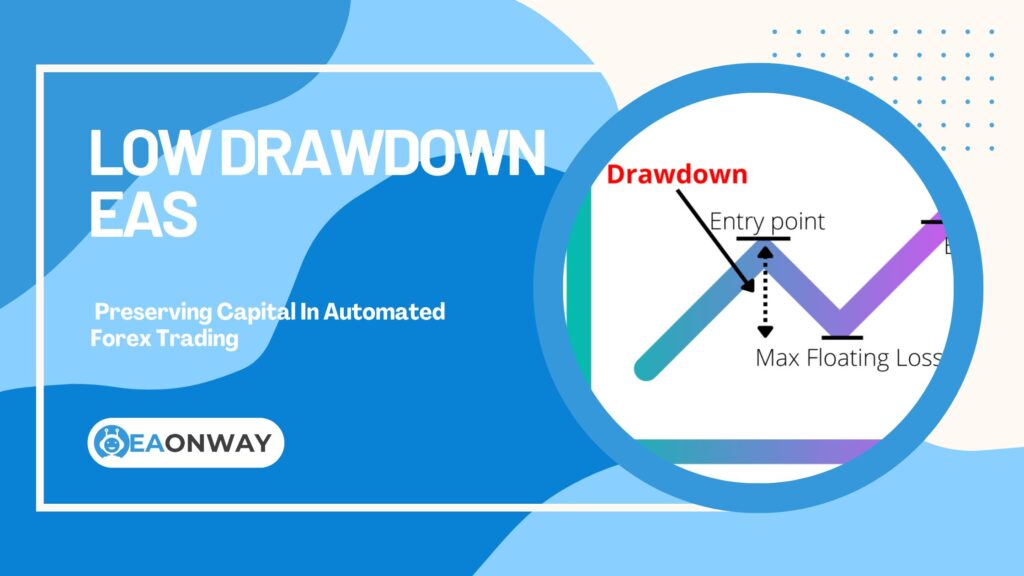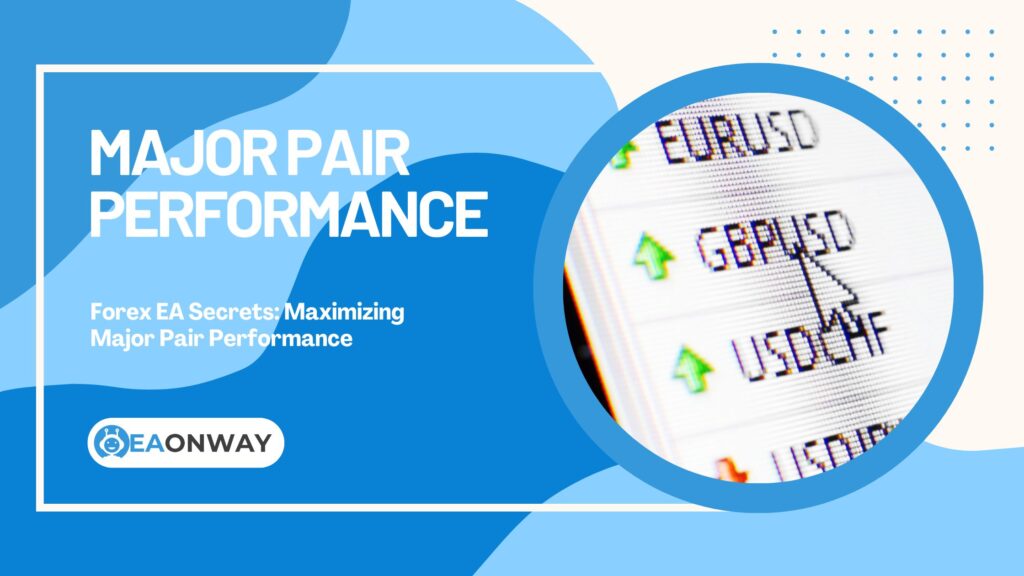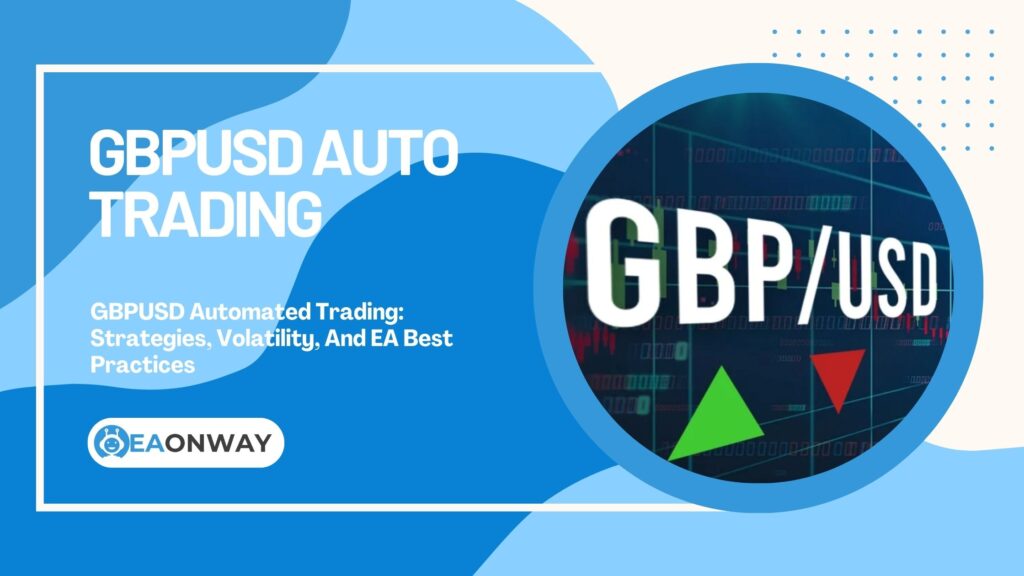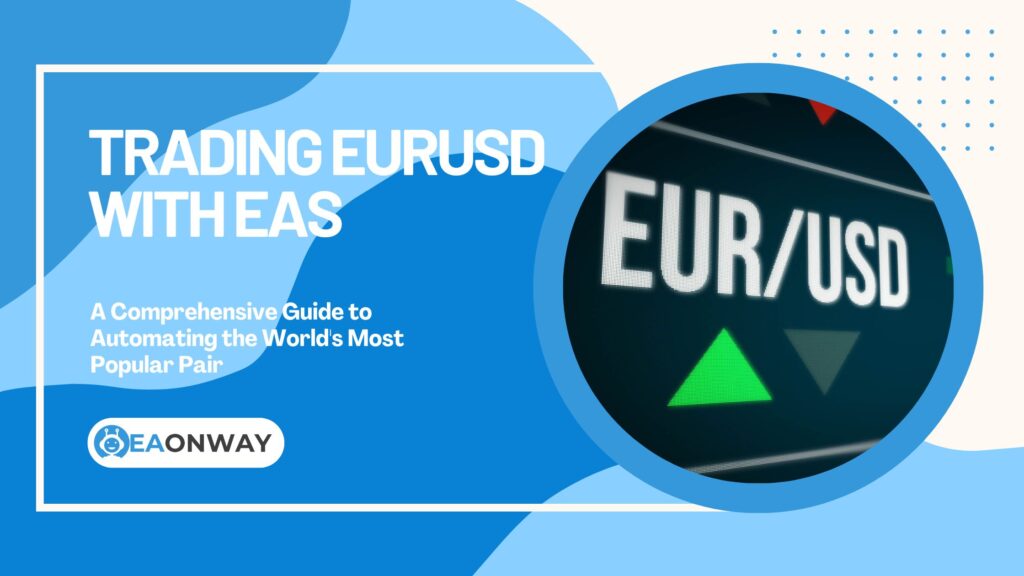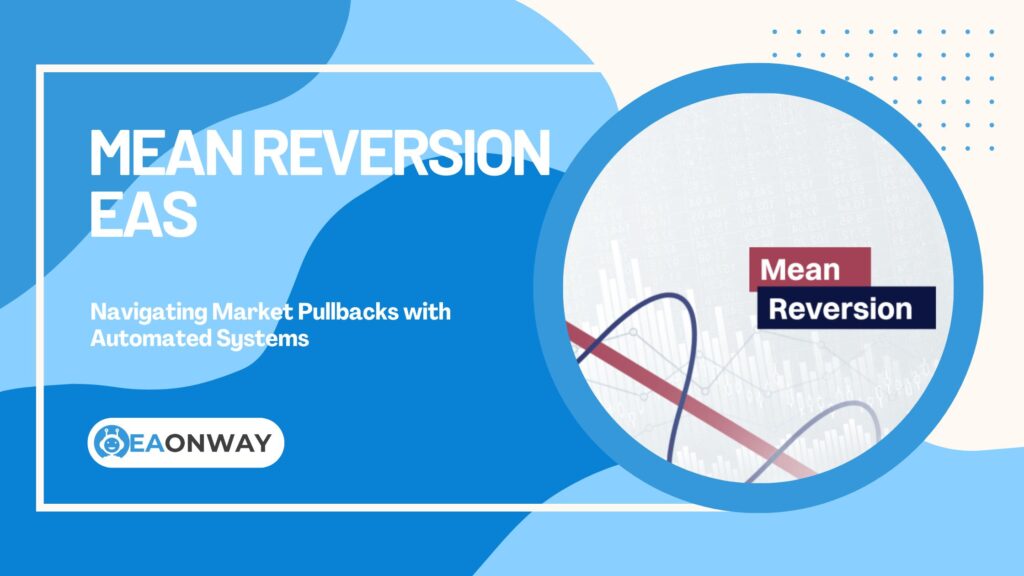Common EA Trading Strategies
USDJPY Expert Advisor: Mastering Automated Trading Strategies for a Unique Currency Pair
USDJPY Expert Advisor: Mastering Automated Trading Strategies for a Unique Currency Pair
The USDJPY currency pair, often nicknamed the “Ninja” or “Gopher,” presents a unique landscape for Forex traders, and leveraging a USDJPY Expert Advisor can seem like an appealing way to navigate its distinct characteristics through automated trading. With the allure of precision and the promise of hands-off operation, many traders are drawn to these automated systems. But what exactly are these EAs, how do they function with a pair as specific as USDJPY, and critically, what are the inherent risks involved? Understanding these tools requires a clear-eyed view, moving beyond hype to grasp their operational realities.
This article delves into the world of USDJPY Expert Advisors, aiming to equip you with comprehensive knowledge. We will explore how these EAs are designed to interact with the Japanese Yen and US Dollar, the common automated trading USDJPY strategies they employ, and the crucial factors to consider, especially the potential pitfalls. The goal is to provide you with a solid educational foundation, enabling you to approach USDJPY EAs with informed caution and realistic expectations, rather than the promise of easy profits. We will also examine how the Bank of Japan’s influence affects USDJPY trading and effective approaches to backtesting USDJPY EA systems.
Key Insights on USDJPY Expert Advisors
Before diving deeper, here’s a quick summary of what you need to know about navigating the world of USDJPY Expert Advisors:
- Automated Tools: USDJPY Expert Advisors are software programs that automate trading decisions for the USD/JPY currency pair based on pre-set rules and algorithms.
- Unique Pair Dynamics: USDJPY is influenced by distinct factors like Bank of Japan (BoJ) policies, US economic data, and specific market session overlaps, requiring specialized EA strategies.
- Strategy Variety: EAs can employ diverse strategies, including trend-following, range-trading, scalping (like a USDJPY scalping robot), or even complex approaches like a USDJPY grid trading strategy.
- Significant Risks: Automated trading with any EA, including those for USDJPY, carries substantial risk. These include market risk, over-optimization, technical failures, and the potential for misleading vendor claims.
- Diligent Selection Crucial: Choosing a USDJPY EA requires careful research, focusing on transparent strategies, verifiable performance (beyond just backtesting USDJPY EA results), and understanding its operational parameters.
- No Guarantees: No USDJPY Expert Advisor, regardless of its sophistication or marketing, can guarantee profits. Past performance is not indicative of future results.
- Continuous Oversight: “Set and forget” is a dangerous misconception. EAs require ongoing monitoring and potential adjustment of USDJPY EA settings as market conditions evolve.
What Exactly Is a USDJPY Expert Advisor?
Understanding the fundamental nature of these tools is the first step towards responsible engagement. These are not magic boxes but rather sophisticated software designed for a very specific purpose.
Defining the USDJPY EA: Your Automated Trading Partner
A USDJPY Expert Advisor is a piece of software, often developed in MQL4 or MQL5 for the MetaTrader platforms (like an MQL5 USDJPY EA), that automatically executes trades on the USD/JPY currency pair. It operates based on a pre-programmed trading strategy, analyzing market data, identifying potential trading opportunities according to its internal logic, and then placing, managing, and closing trades without direct manual intervention from the trader. Think of it as a specialized USDJPY trading robot designed to follow a strict set of rules.
The core idea behind a USDJPY automated system is to remove emotional decision-making and to execute a strategy with discipline, 24/5, as the Forex market operates. For those interested in automated trading USDJPY, these EAs offer a way to participate without being constantly glued to the charts. However, the effectiveness of any USDJPY algorithm depends entirely on the quality of its underlying strategy and its adaptability to current market conditions.
How Do USDJPY Expert Advisors Execute Trades?
USDJPY Expert Advisors execute trades by integrating with a trading platform, most commonly MetaTrader 4 (MT4) or MetaTrader 5 (MT5). The EA, once installed and activated on a chart of the USDJPY pair, continuously monitors price movements and other technical indicators it’s programmed to watch.
Here’s a simplified breakdown of their operation:
- Market Analysis: The EA processes incoming price data (ticks) for USDJPY. It applies its built-in rules, which might involve checking conditions related to moving averages, oscillators, support/resistance levels, or more complex patterns.
- Signal Generation: If the market conditions meet the EA’s predefined criteria for a trade entry (buy or sell), it generates a trading signal.
- Order Placement: The EA then sends an order to the Forex broker via the trading platform. This includes parameters like lot size, stop-loss, and take-profit levels, if programmed.
- Trade Management: Once a trade is open, the EA can manage it according to its rules. This might involve trailing stop-losses, modifying take-profit levels, or adding to positions (as in some USDJPY grid trading strategy approaches).
- Trade Closure: The EA will close the trade when exit conditions are met – for example, when a take-profit or stop-loss is hit, or if an opposing signal is generated.
The entire process is automated, relying on the EA’s code and the stability of the trading platform and internet connection, often leading users to consider a Forex VPS EA setup for reliability.
The Unique Landscape of Trading USDJPY with EAs
The USDJPY pair is not just any currency combination; it possesses distinct characteristics that automated trading systems must be designed to handle. Its behavior is shaped by unique economic forces and market dynamics.
Why Is USDJPY a Distinct Pair for Automated Systems?
USDJPY is considered a distinct pair for automated trading for several compelling reasons, making it a frequent target for those looking to develop USDJPY EA strategies:
- High Liquidity: As one of the major currency pairs, USDJPY generally boasts high trading volume and tight spreads, particularly during the overlap of the Asian, European, and North American trading sessions. This can be beneficial for EAs, especially those designed for frequent trading or scalping.
- Influence of Central Banks: The pair is heavily influenced by the monetary policies of the Bank of Japan (BoJ) and the US Federal Reserve (Fed). Announcements, interest rate decisions, and particularly interventions by the Bank of Japan can cause significant and rapid price movements. EAs must be robust enough to handle such volatility or be programmed to avoid trading during high-impact USDJPY news events. The Bank for International Settlements (BIS) regularly reports on central bank actions and their market impacts, highlighting the significance of these interventions (Source: BIS Quarterly Review).
- Carry Trade Dynamics: Historically, interest rate differentials between the US and Japan made USDJPY a popular pair for carry trades (borrowing in a low-interest-rate currency like JPY to invest in a higher-interest-rate currency like USD). While this varies with monetary policy, EAs might be designed to capitalize on or avoid conditions related to carry trade unwinding.
- Safe-Haven Flows: The Japanese Yen (JPY) often acts as a “safe-haven” currency. During times of global economic uncertainty or risk aversion, funds may flow into the JPY, causing USDJPY to fall. EAs trading this pair need to account for these sentiment-driven shifts.
- Distinct Session Behavior: USDJPY can exhibit different behavioral patterns during the Tokyo, London, and New York trading sessions. Some EAs might be optimized to trade only during specific sessions when volatility or directional bias is more predictable.
Understanding these nuances is vital when considering any USDJPY automated strategies.
How Does USDJPY Volatility Affect EA Performance?
USDJPY volatility trading is a key consideration because fluctuations in price movement directly impact how an Expert Advisor performs. The effect can be positive or negative, depending on the EA’s strategy.
- Low Volatility Impact: During periods of low volatility, USDJPY might trade within a tight range.
- Range-bound EAs (e.g., those using oscillators like RSI or Stochastics to sell at resistance and buy at support) may perform well.
- Trend-following EAs might struggle, experiencing frequent small losses (whipsaws) as no clear direction emerges.
- Scalping robots might find opportunities but require very low spreads to be effective.
- High Volatility Impact: Periods of high volatility, often triggered by economic data releases (like US Non-Farm Payrolls) or Bank of Japan USDJPY announcements, can lead to rapid and extensive price swings.
- Trend-following EAs can potentially capture large profits if they catch the beginning of a strong move.
- Range-bound EAs are at high risk of significant losses as price breaks decisively out of established ranges.
- All EAs face increased risk of slippage (orders filled at a worse price than expected) and wider spreads during extreme volatility. According to studies on market microstructure, high volatility often leads to wider bid-ask spreads (Source: Journal of Financial Economics).
- A USDJPY grid trading strategy, for example, can be particularly vulnerable in high volatility if the market moves strongly against its open positions.
Therefore, a “safe USDJPY EA” (a term to be used with extreme caution) would ideally have mechanisms to adapt to changing USDJPY volatility or incorporate filters to avoid trading during excessively chaotic market conditions.
Strategies Commonly Employed by USDJPY Expert Advisors
Expert Advisors for USDJPY can utilize a wide array of trading methodologies. Understanding these common approaches is crucial for evaluating any potential EA.
What Are Some Common Strategies for USDJPY EAs?
The most common strategies programmed into USDJPY Expert Advisors include trend-following, range-trading (mean-reversion), scalping, grid trading, and sometimes news-based approaches. Each strategy has its own logic, ideal market conditions, and inherent risk profile when applied to automated trading USDJPY. The “best USDJPY EA” for one trader might not suit another, as suitability depends on risk tolerance and understanding of the strategy.
Trend-Following Strategies for USDJPY
Trend-following EAs aim to identify and capitalize on sustained directional movements in the USDJPY price.
- Explanation: These EAs typically use technical indicators like Moving Averages (e.g., a crossover of a short-term MA above a long-term MA for a buy signal), Parabolic SAR, or ADX to determine the presence and strength of a trend. Once a trend is identified, the EA will enter a trade in the direction of the trend and hold it until signs of reversal appear.
- USDJPY Application: USDJPY can exhibit strong trends, especially driven by divergent monetary policies or significant economic shifts. Trend-following EAs can be effective during these periods.
- Pros: Potential for large profits if a strong trend is caught early; can be relatively simple to understand.
- Cons: Prone to whipsaws and multiple small losses during ranging or choppy market conditions. Requires patience as strong trends may not occur frequently.
Range-Trading and Mean-Reversion USDJPY EAs
Range-trading, or mean-reversion, EAs operate on the assumption that USDJPY will often revert to a historical average or trade within defined price boundaries.
- Explanation: These EAs identify overbought or oversold conditions using oscillators like the Relative Strength Index (RSI), Stochastic Oscillator, or Bollinger Bands. They aim to sell when the price reaches the upper boundary of a range (or is overbought) and buy when it hits the lower boundary (or is oversold).
- USDJPY Application: USDJPY can spend considerable time consolidating, especially during certain sessions or in the absence of major news. Range-trading EAs can be suited for these conditions.
- Pros: Can generate frequent trading signals in non-trending markets.
- Cons: Highly vulnerable to strong breakouts. If the price breaks out of the range with momentum, a mean-reversion EA can incur significant losses as it trades against the emerging trend. Requires carefully set stop-losses.
Scalping Robots for the USDJPY Pair
A USDJPY scalping robot is designed to make numerous small profits by entering and exiting trades very quickly, often holding positions for only seconds or minutes.
- Explanation: Scalping EAs aim to capture just a few pips per trade. They rely on high trading frequency and a high win rate (though individual wins are small).
- USDJPY Application: The typically tight spreads on USDJPY can make it a candidate for scalping. However, this strategy is extremely sensitive to execution speed and broker conditions.
- Requirements: Requires a broker with very low spreads, minimal slippage, and fast order execution. A Forex VPS EA setup is almost mandatory for consistent performance.
- Risks: High transaction costs (due to frequent trading) can eat into profits. Highly susceptible to latency and broker-specific conditions. A few losing trades can wipe out many small wins.
Grid Trading Systems for USDJPY: A Double-Edged Sword
A USDJPY grid trading strategy involves placing a series of buy and sell orders at predefined intervals above and below the current market price, creating a “grid” of orders.
- Explanation: As the price moves up or down and triggers these orders, the EA aims to profit from the overall fluctuations within the grid. For example, if the price is rising, buy orders are triggered and then closed for profit as sell orders at higher levels are hit, or vice versa.
- USDJPY Application: Can seem attractive in ranging markets as it constantly opens and closes trades.
- Risks: This is one of the riskiest strategies. If the market enters a strong, sustained trend against the grid’s open positions, the EA will accumulate an increasing number of losing trades. Without adequate margin and risk management, this can lead to a margin call and catastrophic losses. Many “profitable USDJPY EA” claims for grid systems often hide this immense underlying risk. Extreme caution is advised.
News-Based EAs and USDJPY: Riding the Waves (Cautiously)
Some EAs are designed to trade specifically around major USDJPY news impact events, such as interest rate announcements from the Bank of Japan or the US Federal Reserve, or key economic data releases like Non-Farm Payrolls.
- Explanation: These EAs might attempt to trade the initial spike in volatility, fade the move, or trade breakouts following the news.
- USDJPY Application: Given the sensitivity of USDJPY to such events, this can seem appealing.
- Risks: Extremely high risk. Volatility during news can be immense, leading to severe slippage, widened spreads, and unpredictable price action. Accurately predicting market reaction to news is notoriously difficult. Many experienced traders avoid trading directly during major news releases. Developing a robust EA for such conditions is a significant challenge.
Navigating the Risks: The Critical Downsides of USDJPY EAs
While automated trading offers allure, it’s paramount to understand the substantial risks involved, particularly with a nuanced pair like USDJPY. Ignoring these can lead to significant financial loss and disappointment.
What Are the Primary Risks of Using USDJPY Expert Advisors?
The primary risks of using USDJPY Expert Advisors include inherent market unpredictability, the danger of over-optimization leading to poor live performance, potential technical failures, the prevalence of scams and unrealistic promises in the EA market, and the false belief that EAs are “set and forget” solutions. Each of these can undermine even a seemingly well-designed USDJPY trading robot.
Market Risk: The Unpredictable Nature of Forex
Even the most sophisticated USDJPY Expert Advisor operates within the Forex market, which is inherently unpredictable.
- Explanation: Unforeseen economic events, geopolitical tensions, or sudden shifts in market sentiment can cause abrupt and significant price movements that no EA can perfectly anticipate. The Bank of Japan USDJPY interventions, for example, can dramatically alter the pair’s trajectory without warning.
- Impact: An EA programmed based on historical patterns may fail when unprecedented market conditions arise. No amount of backtesting can guarantee future performance because the future can always be different. Financial regulators like the U.S. Commodity Futures Trading Commission (CFTC) consistently warn about the high risks in Forex trading (Source: CFTC Forex Fraud Advisory).
Over-Optimization and Curve Fitting: The Past Isn’t Always Prologue
This is a critical, yet often misunderstood, risk when evaluating any EA, including those for automated trading USDJPY.
- Explanation: Over-optimization (or curve fitting) occurs when an EA’s parameters are excessively tweaked to produce stellar results on a specific historical dataset during backtesting USDJPY EA development. The EA essentially “memorizes” the past data rather than learning a robust trading logic.
- Impact: An over-optimized EA will likely perform exceptionally well in backtests but fail miserably in live trading because the specific historical conditions it was tailored to are unlikely to repeat exactly. This is a common pitfall for many aspiring users seeking a “profitable USDJPY EA.”
Technical Failures: When Automation Goes Wrong
Reliance on technology means vulnerability to technical issues.
- Explanation: USDJPY Expert Advisors require a stable internet connection, a constantly running trading platform (MT4/MT5), and a reliable broker server.
- Impact:
- Power outages or internet disruptions can stop the EA from managing open trades or entering new ones.
- Platform crashes or freezes can have similar consequences.
- Broker-side issues like server outages or requotes can affect trade execution.
- This is why many serious EA traders use a Forex VPS EA (Virtual Private Server) to ensure their EAs run 24/7 in a stable environment.
Lack of Transparency and Scams in the EA Market
The market for Forex EAs is unfortunately rife with vendors making exaggerated claims and selling “black box” systems.
- Explanation: Many EAs are sold without a clear explanation of their underlying trading strategy. Sellers might showcase perfect-looking equity curves from cherry-picked backtests.
- Impact: Users may purchase a USDJPY EA based on hype, only to find it doesn’t perform as advertised or employs an overly risky strategy (like an undisclosed Martingale or aggressive USDJPY grid trading strategy). Finding a genuinely “safe USDJPY EA” requires deep skepticism and thorough due diligence. Always question promises of guaranteed profits or unusually high returns.
The Illusion of “Set and Forget”: Why EAs Need Monitoring
A common misconception is that once a USDJPY Expert Advisor is set up, it can be left to run indefinitely without oversight.
- Explanation: Market conditions are dynamic. A strategy that worked well in the past may become ineffective as volatility changes, new trends emerge, or the fundamental backdrop for USDJPY shifts.
- Impact: An EA left unmonitored could continue trading with outdated USDJPY EA settings, potentially leading to accumulating losses. Regular review of performance, market conditions, and EA settings is crucial. Automated trading is not truly passive income in the sense of requiring no effort after setup.
Choosing and Implementing a USDJPY Expert Advisor Wisely
Selecting and deploying a USDJPY Expert Advisor requires a methodical and cautious approach. Rushing into a purchase or using an unverified system can be a recipe for disappointment.
How Do You Select a Credible USDJPY Expert Advisor?
Selecting a credible USDJPY Expert Advisor involves scrutinizing its track record, understanding its trading logic (avoiding “black boxes”), performing your own thorough backtesting and forward testing, considering the cost in relation to potential (and risk), and assessing developer support and community feedback. No single factor is definitive; a holistic evaluation is necessary.
Verifiable Track Record: Beyond a Few Good Weeks
A vendor’s claims are insufficient; look for independent verification.
- What to Look For:
- Live Performance Records: Seek EAs with live trading results verified by third-party services like Myfxbook or FXBlue. Ensure the track record is for a reasonable duration (e.g., at least 6-12 months) and on a real, not demo, account.
- Consistency: Look for consistent performance rather than a few spectacular months followed by large drawdowns.
- Drawdown: Pay close attention to the maximum drawdown. A “profitable USDJPY EA” with a 70% drawdown is extremely risky.
- Red Flags: Lack of a live, verified track record; short performance history; unusually smooth equity curves that might indicate manipulated reporting or a very risky strategy (like grid/martingale hidden until a large loss).
Understanding the EA’s Logic: No Black Boxes
You should have a clear understanding of how the USDJPY trading robot makes its decisions.
- Why It Matters: If you don’t understand the strategy, you can’t assess its suitability for current market conditions or identify when it might be failing.
- What to Seek:
- Clear Strategy Description: The vendor should clearly explain the trading methodology (e.g., trend-following, range-trading, specific indicators used).
- Parameter Explanations: Understand what the adjustable USDJPY EA settings do.
- Red Flags: Vague or overly complex explanations; refusal to disclose the basic strategy type; claims of “secret algorithms.”
Backtesting and Forward Testing: Due Diligence is Key
Before risking real capital, rigorously test the EA.
- Backtesting USDJPY EA:
- Use quality historical data (tick data if possible) covering various market conditions (trending, ranging, volatile).
- Be aware of the limitations (e.g., cannot perfectly replicate live spread, slippage, or execution).
- Perform USDJPY EA optimization cautiously to avoid curve fitting.
- Forward Testing (Demo Trading):
- Run the EA on a demo account for an extended period (weeks or months). This tests its performance in current, live market conditions without risking real money.
- This helps verify if the backtest results translate to a live environment.
- This iterative process of testing and analysis is crucial for anyone looking to develop USDJPY EA skills or use existing ones effectively.
Considering the Cost vs. Potential (and Risk)
EAs come with various price tags.
- Free EAs: Often very risky, poorly coded, or use dangerous strategies. Be extremely cautious.
- One-Time Purchase vs. Subscription: Consider the total cost of ownership.
- Value Proposition: Don’t equate high price with high quality. The cost should be justifiable by the transparency, support, and realistic potential of the EA – always weighed against the inherent risks. Remember, the purchase price is small compared to the trading capital at risk.
Developer Support and Community Feedback
Good support and positive, realistic community feedback can be indicators of a more reputable offering.
- Developer Support: Is the developer responsive to questions? Do they provide updates for their MQL5 USDJPY EA or MT4 version?
- Community Reviews: Look for independent reviews and discussions on forums. Be wary of overly promotional reviews or forums controlled by the EA vendor. Seek balanced perspectives that discuss both pros and cons.
Practical Steps: Backtesting Your USDJPY EA Effectively
Thorough backtesting is a cornerstone of evaluating any USDJPY Expert Advisor. While not a perfect predictor of future success, it provides valuable insights into an EA’s historical performance and behavior.
What Is the Process for Backtesting a USDJPY EA?
The process for backtesting a USDJPY EA generally involves obtaining the EA file, acquiring quality historical price data for USDJPY, setting up the test parameters within the MetaTrader Strategy Tester (or other backtesting software), running the simulation, and then carefully analyzing the generated performance report. This iterative process helps understand how the EA might have performed under past market conditions.
Gathering Quality Historical Data for USDJPY
The quality of your backtest is heavily dependent on the quality of your historical data.
- Importance: Using poor-quality data (e.g., data with gaps, inaccurate prices, or only M1 data for EAs that trade on lower timeframes) can lead to misleading backtest results.
- Sources:
- Broker Data: Your Forex broker often provides historical data directly within MetaTrader.
- Third-Party Providers: Companies like Tickstory or Dukascopy offer free or paid high-quality tick data. Tick data is the most granular and provides more accurate backtests, especially for scalping EAs.
- Considerations: Ensure the data covers a long enough period and diverse market conditions relevant to USDJPY’s behavior.
Setting Up the Backtest in MetaTrader (MT4/MT5)
MetaTrader’s Strategy Tester is a common tool for backtesting.
- Steps:
- Open the Strategy Tester (View > Strategy Tester in MT4/MT5).
- Select the USDJPY Expert Advisor.
- Choose the USDJPY symbol.
- Select the “Model”:
- Every tick: Most accurate but slowest. Essential for testing EAs that react to intra-bar price movements or for USDJPY scalping robots.
- Control points: Faster, less accurate.
- Open prices only: Fastest, least accurate, only suitable for EAs that trade strictly on bar open.
- Specify the date range for the test.
- Enable “Visual mode” if you want to watch the EA trade on a chart (slows down testing).
- Set the “Period” (timeframe the EA is designed for).
- Input the “Spread.” For USDJPY, use a realistic average spread, or “Current” if testing with live spread conditions (though this can vary). For robust testing, consider testing with slightly higher-than-average spreads.
- Access “Expert properties” to configure the EA’s input parameters (USDJPY EA settings), initial deposit, and optimization settings if performing USDJPY EA optimization.
Analyzing Backtest Reports: Key Metrics to Scrutinize
Once the backtest is complete, MetaTrader generates a report with various performance metrics.
- Key Metrics:
- Total Net Profit: Overall profit or loss.
- Profit Factor: Gross profit divided by gross loss (ideally > 1.5-2.0, but context matters).
- Maximal Drawdown: The largest peak-to-trough decline in equity during the test. This is a critical risk measure. A low drawdown is preferable.
- Total Trades: Number of trades taken.
- Win Rate (% of Profitable Trades): Percentage of trades that were profitable.
- Average Profit/Loss per Trade: Helps understand the risk/reward ratio.
- Consecutive Wins/Losses: Long losing streaks can be psychologically challenging and indicate potential strategy flaws.
- Interpretation: Don’t focus solely on net profit. A high profit factor with a low drawdown and a reasonable number of trades is generally more desirable than a sky-high profit achieved with excessive risk. Scrutinize the equity curve for smoothness versus volatility.
The Limitations of Backtesting and the Need for Forward Testing
While essential, backtesting has inherent limitations.
- Past Performance is Not Future Guarantee: This cannot be overstated. Market conditions change.
- Idealized Conditions: Backtests don’t perfectly replicate real-world trading conditions like variable spreads, slippage, execution delays, or the psychological impact of trading live.
- Curve Fitting Risk: As mentioned, it’s easy to over-optimize an EA to past data.
- Forward Testing (Demo Trading): After backtesting, always run the USDJPY EA on a demo account with live market data for several weeks or months. This “out-of-sample” testing provides a much better indication of how the EA might perform in real-time.
Diligent backtesting and forward testing are crucial steps for anyone serious about using automated trading strategies, helping to filter out unsuitable systems and manage expectations for even the best USDJPY EA candidates.
Conclusion: Informed Decisions in USDJPY Automated Trading
Navigating the world of USDJPY Expert Advisors requires a blend of technical understanding, strategic insight, and a healthy dose of skepticism. These automated trading systems offer the potential to execute strategies on the unique USDJPY pair with precision and without emotional interference. However, as we’ve explored, they are far from a guaranteed path to profit and come with significant, multifaceted risks. The allure of automated trading USDJPY must be tempered with a realistic appreciation of factors like USDJPY volatility trading, the critical influence of entities like the Bank of Japan on USDJPY, and the inherent challenges in backtesting USDJPY EA systems effectively.
The journey to potentially leveraging a USDJPY trading robot successfully—or any Forex EA, for that matter—is paved with education and due diligence. Understanding the various strategies, from trend-following to more complex approaches like a USDJPY grid trading strategy or a USDJPY scalping robot, is vital. More importantly, a clear comprehension of the risks—market dynamics, over-optimization, technical failures, and misleading vendor claims—is paramount. There is no universally “best USDJPY EA” or “profitable USDJPY EA” that works for everyone in all conditions. Success, if achieved, comes from careful selection, rigorous testing, ongoing monitoring of USDJPY EA settings, and robust risk management. Approach USDJPY Expert Advisors not as a shortcut to wealth, but as sophisticated tools that demand respect, understanding, and continuous oversight.
Disclaimer
The information provided in this article is for educational purposes only and should not be considered financial or investment advice. Trading Forex, CFDs, and other leveraged financial instruments carries a high level of risk and may not be suitable for all investors. The high degree of leverage can work against you as well as for you. Before deciding to trade Forex or use any automated trading systems like Expert Advisors, you should carefully consider your investment objectives, level of experience, and risk appetite. There is a possibility that you could sustain a loss of some or all of your initial investment and therefore you should not invest money that you cannot afford to lose. You should be aware of all the risks associated with Forex trading and seek advice from an independent financial advisor if you have any doubts. EaOnWay.com does not recommend or endorse any specific Expert Advisor or trading strategy. Past performance is not indicative of future results.
-
Forex EA: A Beginner’s Guide To Low-Risk Systems
-
No DLL EA: Security, Portability, And Trust Benefits in Forex Trading
-
The Advantage of Forex EAs with Source Code: Unlocking Customization, Transparency, and Learning
-
Prop Firm Challenges: Using EAs For Success Guide
-
Verified EA Performance: Track Records And Audits Explained
-
Low Drawdown EAs: Preserving Capital In Automated Forex Trading
-
Forex EA Secrets: Maximizing Major Pair Performance
-
Automated Index Trading: Unlocking Strategies With Expert Advisors
-
Gold Trading EAs Uncovered: Automating Your XAUUSD Strategy
-
GBPUSD Automated Trading: Strategies, Volatility, And EA Best Practices
-
Trading EURUSD with Expert Advisors: A Comprehensive Guide to Automating the World’s Most Popular Pair
-
Mean Reversion EAs: Navigating Market Pullbacks with Automated Systems

